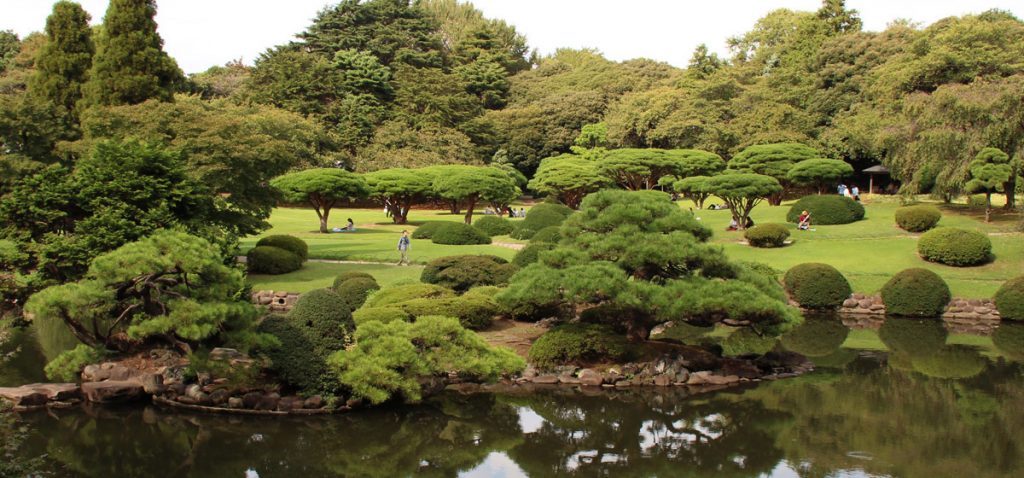Urban parks in world cities – Tokyo

Have you ever visited Amsterdam’s Vondelpark during summer? When the park is bursting out at the seams with tourists, childeren’s parties and locals enjoying a picknick? These crowds are not exemplatory for all parks in The Netherlands; Vondelpark is an exception. Most parks in the kingdom are used to have a stroll or walk the dog. But what is the situation in highly urban areas like Beijing, Tokyo and Bangkok? How are parks used there? In a serie of 3, each time a different city park is discussed. We kick off with Shinjuku Gyoen National Garden in the Japanese capital Tokyo.
Harmonic composition in Tokyo
One of the largest and most popular parks of Tokyo and its 13 million inhabitants is Shinjuku Gyoen National Garden. Its measures 58 hectares and was founded during the Edo period (1603-1867) as a private garden. In later time it transformed into a botanical garden and since 1903 it is in possession of the Japanese emperial family. During World War Two, the park got severly damaged and a subsequent restoration was undertaken with a grand opening in 1949. The current layout of Shinjuku Gyoen dates back to 1906 and is designed by French landscape architect Henri Martinet. Martinet was a student of Edouard André, the leading man of French landscape architecture in the late 19th century.
Japanese, French & English
The perfectly maintained garden is made up of three parts: a traditional Japanese garden, a formal French garden and an English landscape garden. Meticulously cut shrubs and trees have been arranged around ponds and green lawns. Martinet has incorporated Japanese elements like cherry blossom trees and ponds with islands and bridges in a ‘western’ composition. It results in an harmonious design. This makes Shinjuku Gyoen an interesting example of the (global) influence of the French school of thaught during the late 19th century. It is a dialogue between the traditional Japanese garden on the one hand and the at the time fashionable French style on the other.
A traditional Japanese garden is situated at an erraticly shaped pond with various bridges and islands. The area contains several pavilions and a traditional tea house.
The English landscape garden is located in the middle of the park and consists of a large open space with groups of trees and multiple walking paths. The grass invites people to sit down and enjoy a picknick. This can be done in a leasurly manner, as dogs, playing football, throwing a frisbee or similar activities are not allowed. The park has strict rules and charges an admission fee.
The English garden is adjacent to the formal French garden. The latter contains various flower beds and a splendid lane though monumental sycamores. The numerous benches underneath these lovely trees make a great place for people to have a chat, read or enjoy lunch.
The planting has been carefully chosen to ensure blooming in each season of the year. 40 Species of camellias flourish during winter and early spring while roses and hydrangeas blossom in summer. In fall and winter chrysanthemums make for a pretty sight, especially during the annual exhibition of chrysanthemums. Naturally there are cherry blossom trees. 65 Different species bloom in spring; a time the Japansese call ‘hanami’. The exact translation is ‘watching flowers’, but most of the time this activity is accompanied with an elaborate picknick underneath the cherry blossom trees.
The park contains 10 toilet blocks and it wouldn’t be Japan if these weren’t fully equipped and spotlessly clean. Several places offer opportunities to buy some food and drinks. The park also hosts a market with a wide variety of (eductaional) stands. People come to the park to play, eat, read a book or enjoy sitting underneath a tree.


